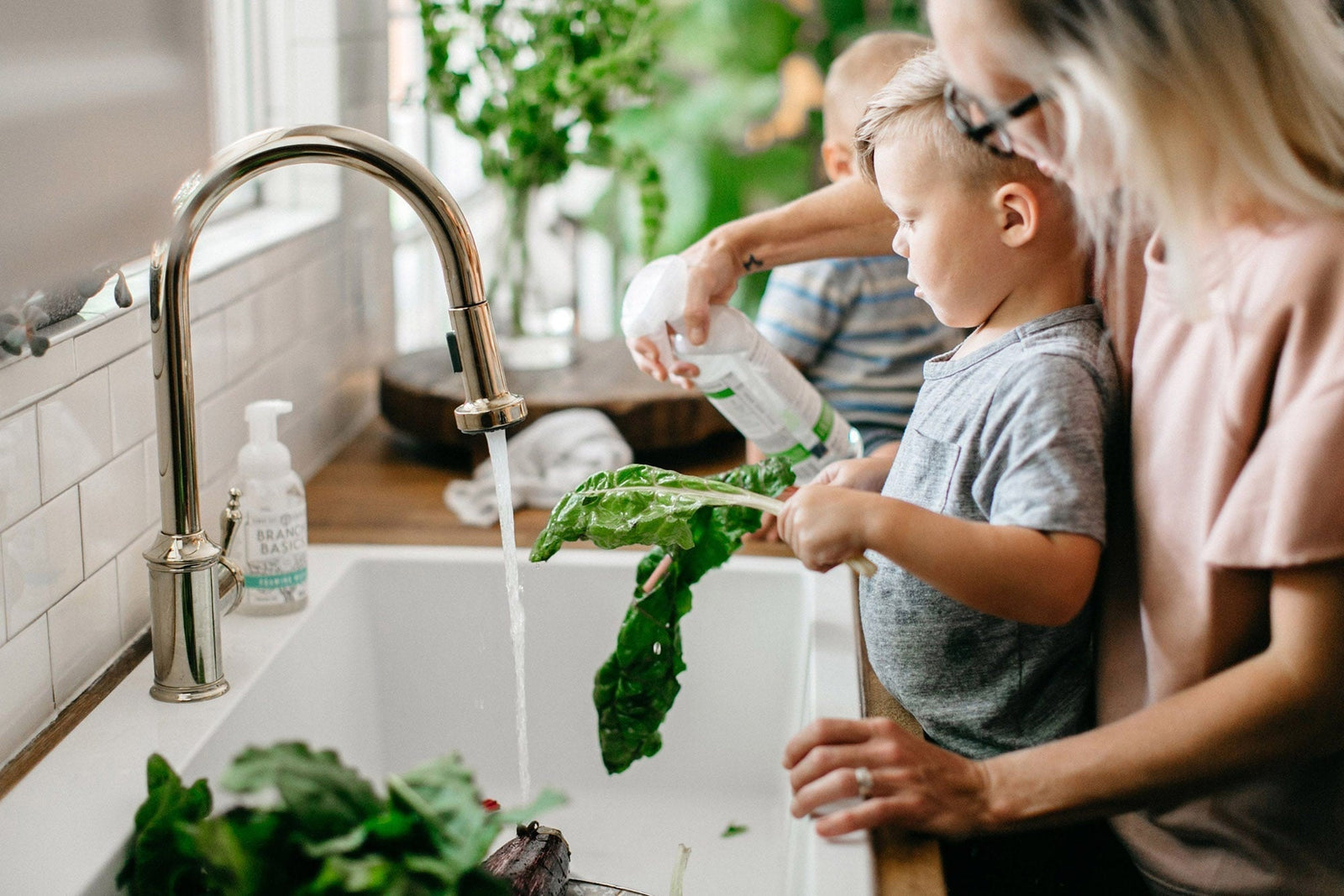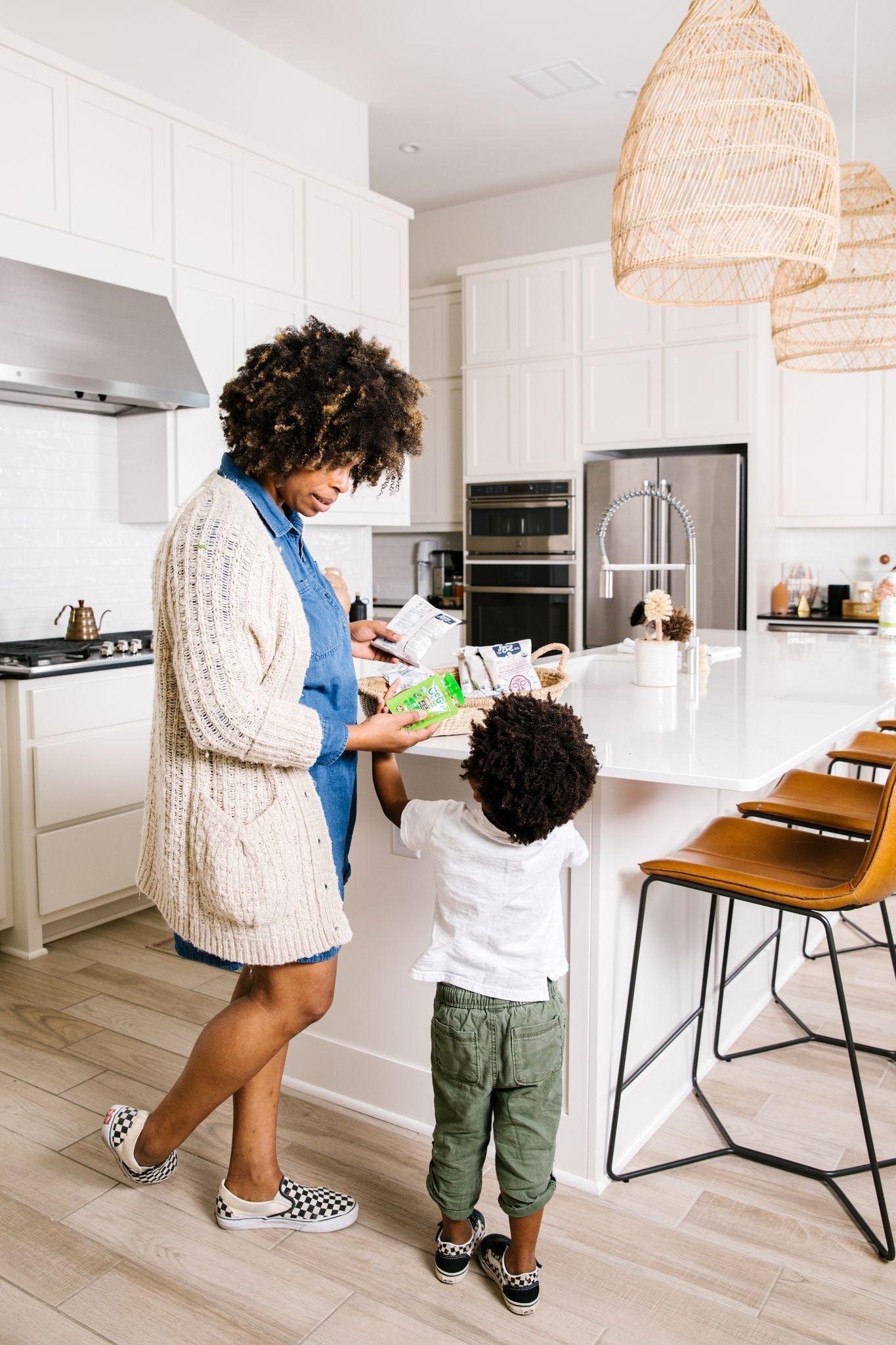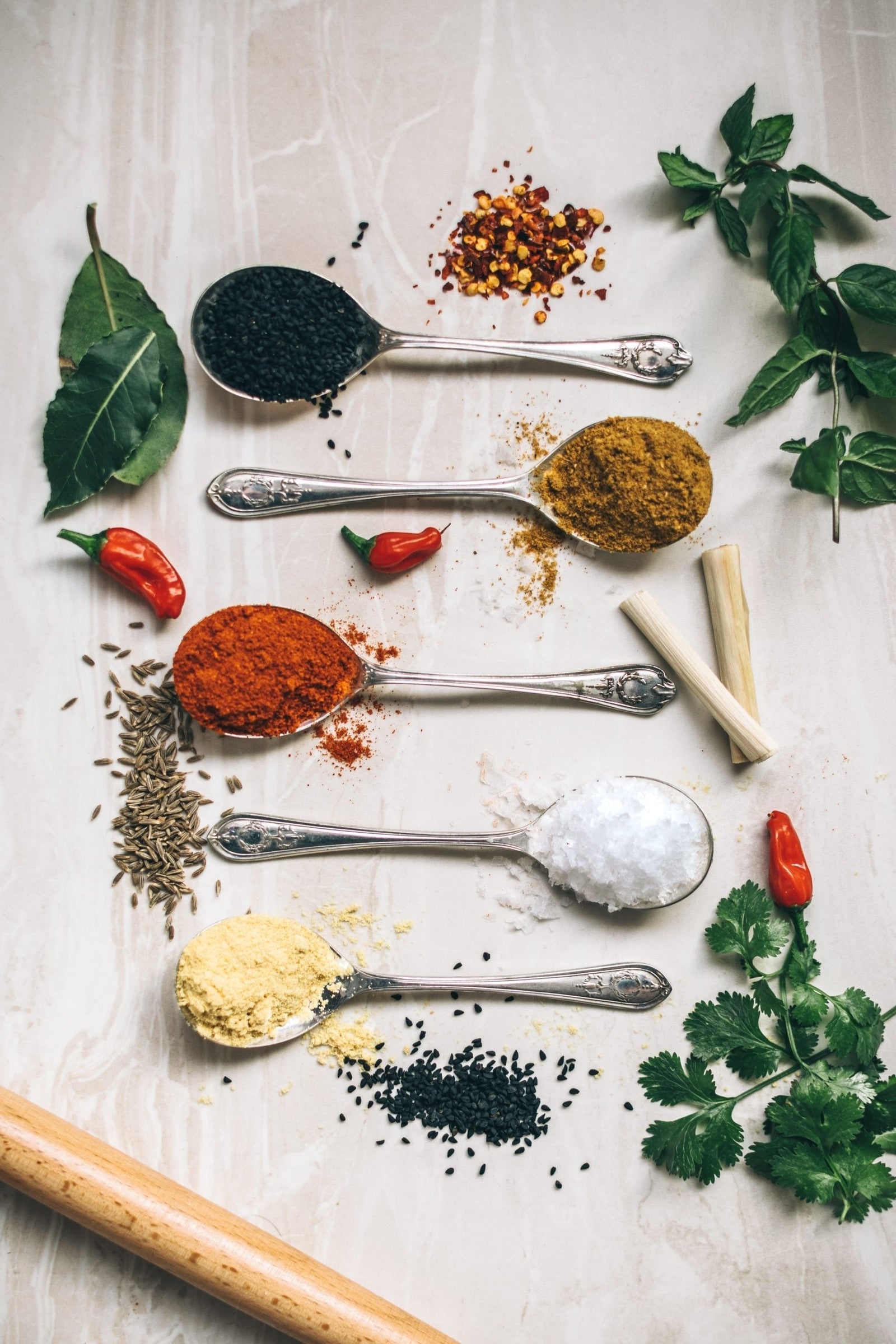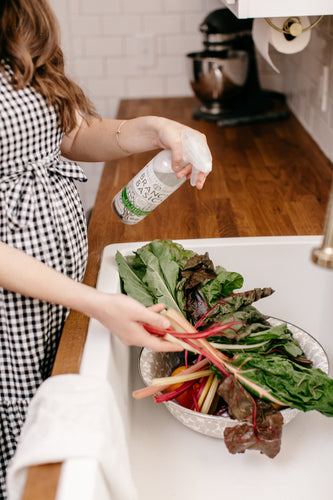3 Best & Natural Produce Wash Recipes (That Really Work!)

Fresh fruits and vegetables are a healthy staple, but they can also carry dirt, bacteria, pesticides, and other residues. Even organic produce benefits from a quick wash before eating. The good news? You don’t need harsh chemicals or store-bought sprays. With a few simple ingredients—or a safe cleaner like Branch Basics—you can make your own natural produce wash at home. Below, we’ll share 3 of the best DIY produce wash recipes to keep your fruits and veggies clean and safe.
1. Branch Basics Produce Wash Recipe
Branch Basics is a great, natural, all-purpose cleaner to use around your home and in the kitchen. Whether you choose to soak or spray your produce, here are the steps we take to make sure produce is squeaky clean with BB:
Soaking method:
- Fill up your sink or bowl with water and add 1/4 - 1/2 teaspoon of Branch Basics Concentrate.
- Add the fresh produce and agitate the produce in the water.
- Let it soak for 5- 10 minutes.
- Pull the produce out of the water before you drain the sink so it is not re-contaminated by the dirt that has accumulated at the bottom.
- Rinse with clean water.
- Let produce air dry on dish towels if stored.
Spraying method:
- If you don't want to soak your produce, you can also use Branch Basics All-Purpose as a produce spray.
- Spray each produce item with Branch Basics, rub gently, wait approximately 30 seconds, and rinse with clean water.
- Let produce air dry on dish towels.
2. Distilled Vinegar, Baking Soda, or Hydrogen Peroxide Produce Wash
A little hydrogen peroxide, baking soda, or vinegar can go a long way when it comes to cleaning your home. Consider using a vinegar, baking soda, or hydrogen peroxide soak to ensure you hit all the nooks and crannies on your produce. Vinegar and hydrogen peroxide have been shown to kill Salmonella and E. coli.
- Add produce to a bowl.
- Add water to cover and 1/2 cup organic apple cider vinegar, organic white distilled vinegar, or hydrogen peroxide or add a few tablespoons of baking soda.
- Agitate the produce in the water
- Soak for 3-10 minutes
- Strain, then rinse under the sink with cold water
- Let produce air dry on dish towels
3. Water (Keep it Simple!)
If you don't have vinegar, baking soda, or a gentle soap like Branch Basics, research shows rinsing with water helps removes bacteria. Simple, yet effective!
-
Rinse produce thoroughly under cool running water.
-
Use a produce brush for firm-skinned fruits and vegetables (like apples or cucumbers).
-
Pat or air-dry on a clean towel.
This method works best when done immediately before eating or cooking.
Why Wash Your Produce?
Even the freshest fruits and vegetables can carry more than just nutrients. Here are the reasons you’ll want to give your produce a quick wash before consuming!
-
Pesticide residues: Conventional crops are often treated with chemical pesticides and herbicides. Rinsing and soaking helps reduce these residues before they reach your plate.
-
Bacteria and germs: From the farm to your kitchen, produce passes through many hands and surfaces. Washing helps remove bacteria like E. coli and Salmonella that may cause foodborne illness.
-
Dirt and debris: Soil, dust, and tiny insects can cling to the surface of your fruits and vegetables. A quick rinse ensures you’re eating clean food.
-
Organic doesn’t mean spotless: Even organically grown produce comes into contact with wildlife, soil, and pollutants, so it still benefits from a wash.
-
Better taste and freshness: Clean produce not only looks more appealing but also lasts longer in the fridge when dirt and bacteria are removed.
Toss the Toxins with Branch Basics
A few simple steps can go a long way. Enjoy your summer produce! Say hello to human-safe cleaning with our Starter Kit, specially made to keep you and your home safe from hazardous cleaning chemicals. Get started with the Trial Kit today.
Categories

Marilee Nelson
Marilee Nelson is an Environmental Toxins expert who has spent nearly 30 years advocating for the chemically-sensitive and chronically-ill. She is a Board Certified Nutritionist, Certified Bau-Biologist and Bau-Biology Inspector and specializes in Food As Medicine. She has helped thousands of families and individuals identify, heal and recover from toxic exposures and is on a mission to revolutionize the way American families view their health.








